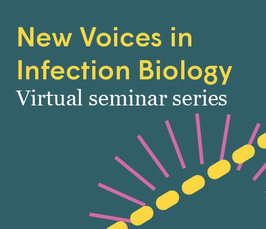Genome-wide screen for host factors involved in STING activation |New Voices in Infection Biology
- Date: Oct 28, 2020
- Time: 04:00 PM (Local Time Germany)
- Speaker: Rutger Luteijn
- University of California, Berkeley, USA
- Location: Zoom video conference
- Host: Olivia Majer
- Contact: vseminars@mpiib-berlin.mpg.de

If you are interested in joining the seminar, please contact: vseminars@mpiib-berlin.mpg.de
Once registered, you will receive a zoom conference link 30 mins before the talk starts - please sign in using your full name.
Talk abstract:
The
accumulation of DNA in the cytosol serves as a key immunostimulatory
signal associated with infections, cancer and genomic damage. Cytosolic
DNA triggers immune responses by activating the cyclic GMP-AMP synthase (cGAS)–stimulator of interferon genes (STING) pathway. The binding of DNA to cGAS
leads to the synthesis of a second messenger, cyclic guanosine
monophosphate–adenosine monophosphate (2′3′-cGAMP). This cyclic
dinucleotide (CDN), activates STING, which promotes the transcription of
factors that stimulate a broader immune response. Exogenous 2′3′-cGAMP
produced by malignant cells and other CDNs, including those produced by
bacteria and synthetic CDNs used in cancer immunotherapy, must traverse
the cell membrane to activate STING in target cells. How these charged
CDNs pass through the lipid bilayer is unknown. Here we used a
genome-wide CRISPR-interference screen to identify host factors involved
in activation by extracellular CDNs. We found the reduced folate
carrier SLC19A1 as the major transporter of CDNs in human cells. CDN
uptake is inhibited by previously identified SLC19A1 substrates,
including folates and two medications approved for treatment of
inflammatory diseases, sulfasalazine and the antifolate methotrexate. In
addition to SLC19A1, our screen revealed many other host factors that
regulate STING activation by CDNs. The role of SLC19A1 and other
newly-identified factors affecting the STING immune response has
implications for the immunotherapeutic treatment of cancer, host
responsiveness to CDN-producing pathogenic microorganisms and,
potentially, for certain inflammatory diseases.